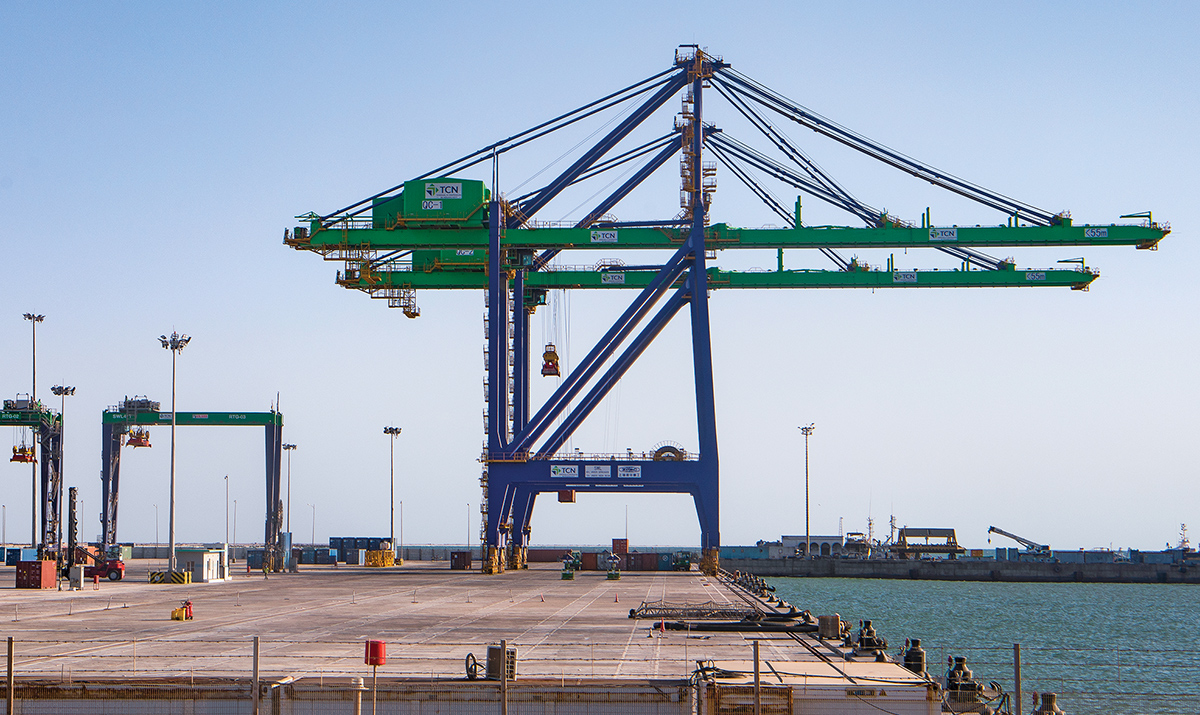
27 Nov The economic lungs of the country
Ports are supporting Mauritania’s vision of becoming an energy center, while creating opportunities for increased regional trade
Central to Mauritania’s preparations for welcoming hydrocarbons to its shores and becoming a hub for green energy industries is investment in the ports on its Atlantic coastline. The most notable of those is the deep-water Autonomous Port of Nouakchott (PANPA), also known as the Port of Friendship, which is responsible for over 85% of the country’s custom revenues.
Constructed in 1986 just 9 miles from the capital, it was the first public commercial port south of the Sahara and is considered to be one of the nation’s most important generators of economic and social development. “Located at the crossroads between Europe, Africa and North America, PANPA enjoys a privileged geographical position that predestined it to play a leading role in international trade, not only for Mauritania, but also for neighboring landlocked countries,” explains the port’s general manager, Sidi Mohamed Ould Maham. These include Mali, which is likely to increasingly rely on the port for its cotton, mineral and other exports.
“PANPA’s traffic has experienced exponential growth since its commissioning, going from just over 400,000 metric tons to more than 5.22 million metric tons in 2022,” Maham reports. To support that growth, the port has undergone various expansions, giving it a theoretical capacity of 10 million metric tons at the moment. “We currently have nine berths and can receive ships with a draft of 11.2 meters for multipurpose berths and 14 meters for container and hydrocarbon ships,” he states. The most recent of its three quays is dedicated to a state-of-the-art container and hydrocarbon terminal that opened in 2021. As Maham notes, “PANPA has supported the country’s oil and gas exploration operations since they started and logistics bases housing multinationals, including BP, Kosmos Energy, Kinross, Total and Exxon are now at the port.”
Infrastructural developments have been accompanied by upgrades to regulatory and safety standards, he adds: “In 2009, that enabled PANPA to be certified in compliance with the provisions of the International Ship and Port Facilities Security Code, in accordance with the Safety of Life at Sea Convention of the International Maritime Organization. We are also regularly audited by the United States Coast Guard.”
PANPA is at the forefront of the nation’s digitalization and sustainability efforts too. It boasts an integrated information technology system that supports all its operations, its lands house a wind farm and it has started negotiations to install a solar plant. “This will provide the energy needs of our entire platform, including those of ships calling here,” he says.
The port also stands out as the source of Mauritania’s first large-scale public-private partnership (PPP), an investment of over $300 million that saw Arise and Meridiam SAS commit to finance, build and manage the new container and hydrocarbon terminal. PANPA intends to create more PPP projects in the short term. Among the ventures it is considering are the establishment of a dedicated area for services linked to the energy sector, including oil, gas and green hydrogen; a station for receiving liquefied natural gas from the Greater Tortue Ahmeyim field; a grain terminal; and a dry port near the border with Mali.
“The development of ports to promote trade, reduce costs and strengthen the competitiveness of the economy constitutes a national strategic priority and so the sector offers real opportunities for international public and private sector investors,” Maham explains. “Given that Mauritania has an Atlantic coastline of more than 400 miles that predisposes it to attract US investments, I would appeal to American investors to come and invest in our ports and logistics sector.”
